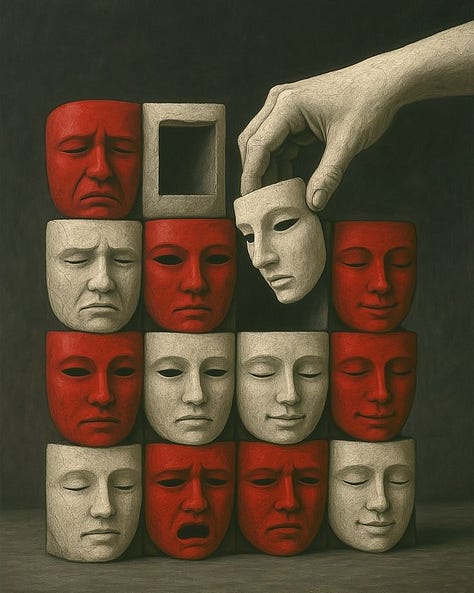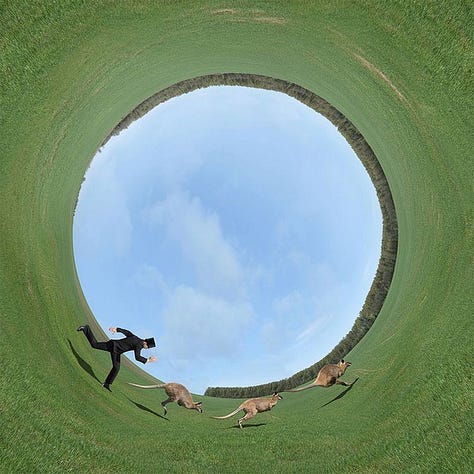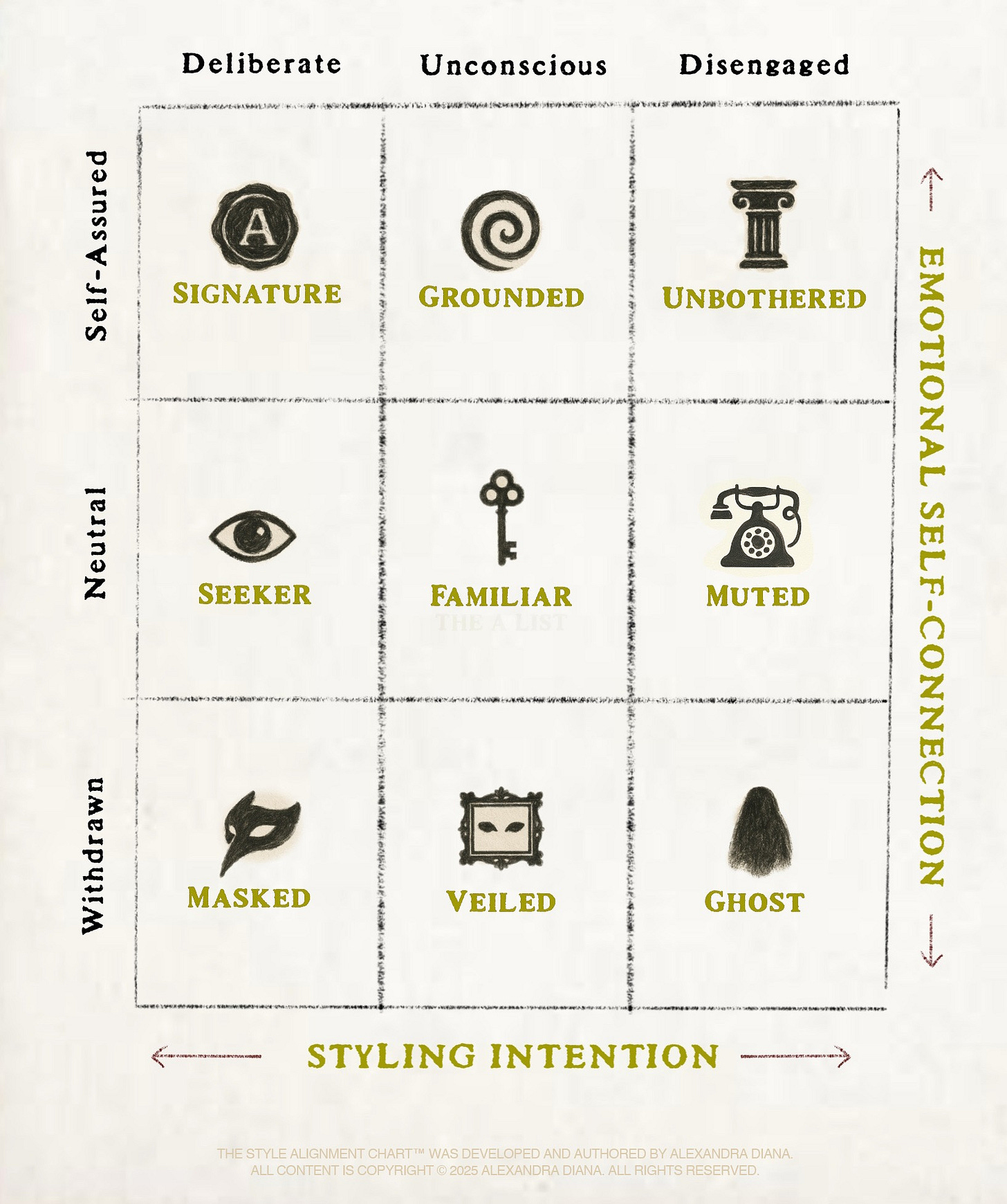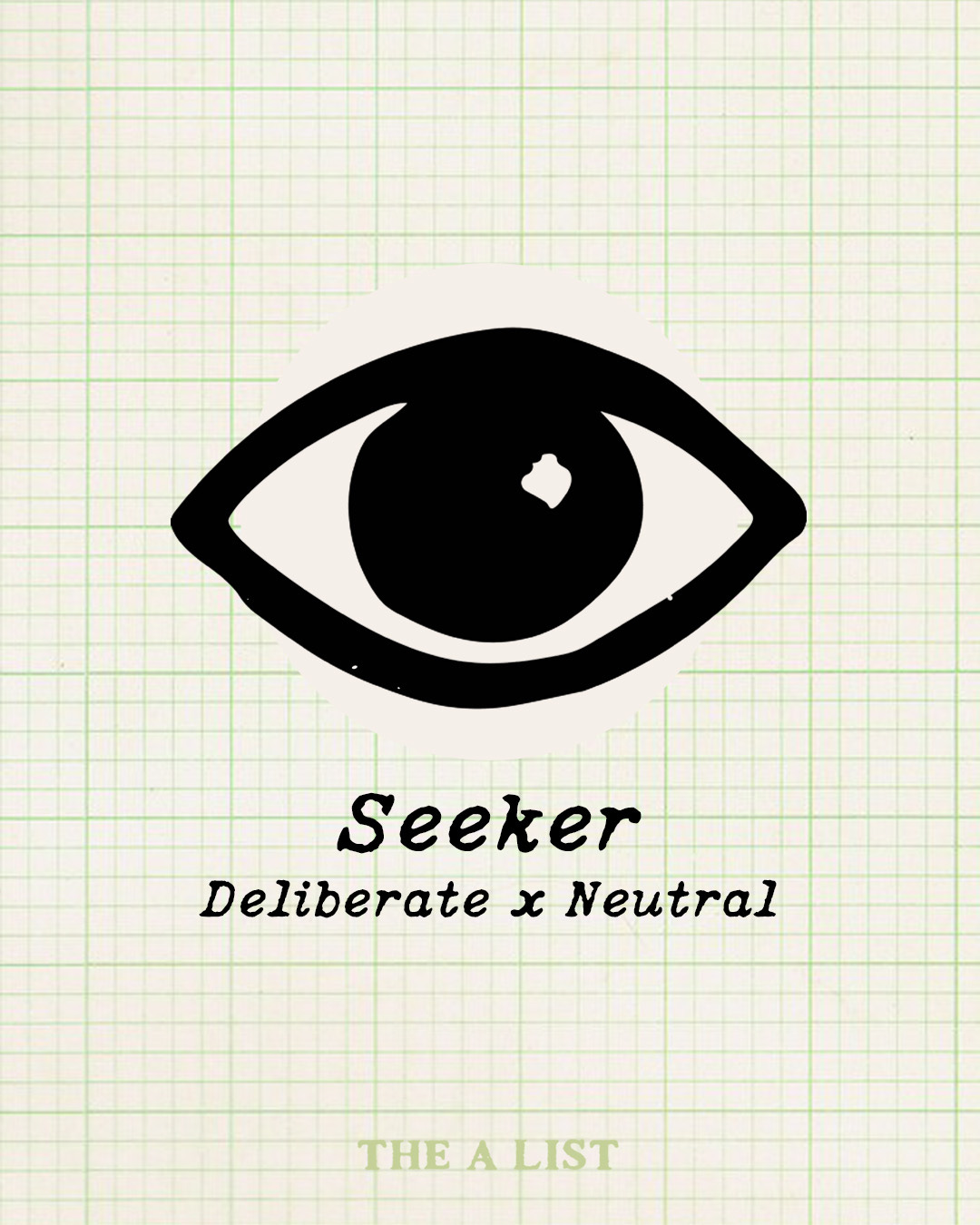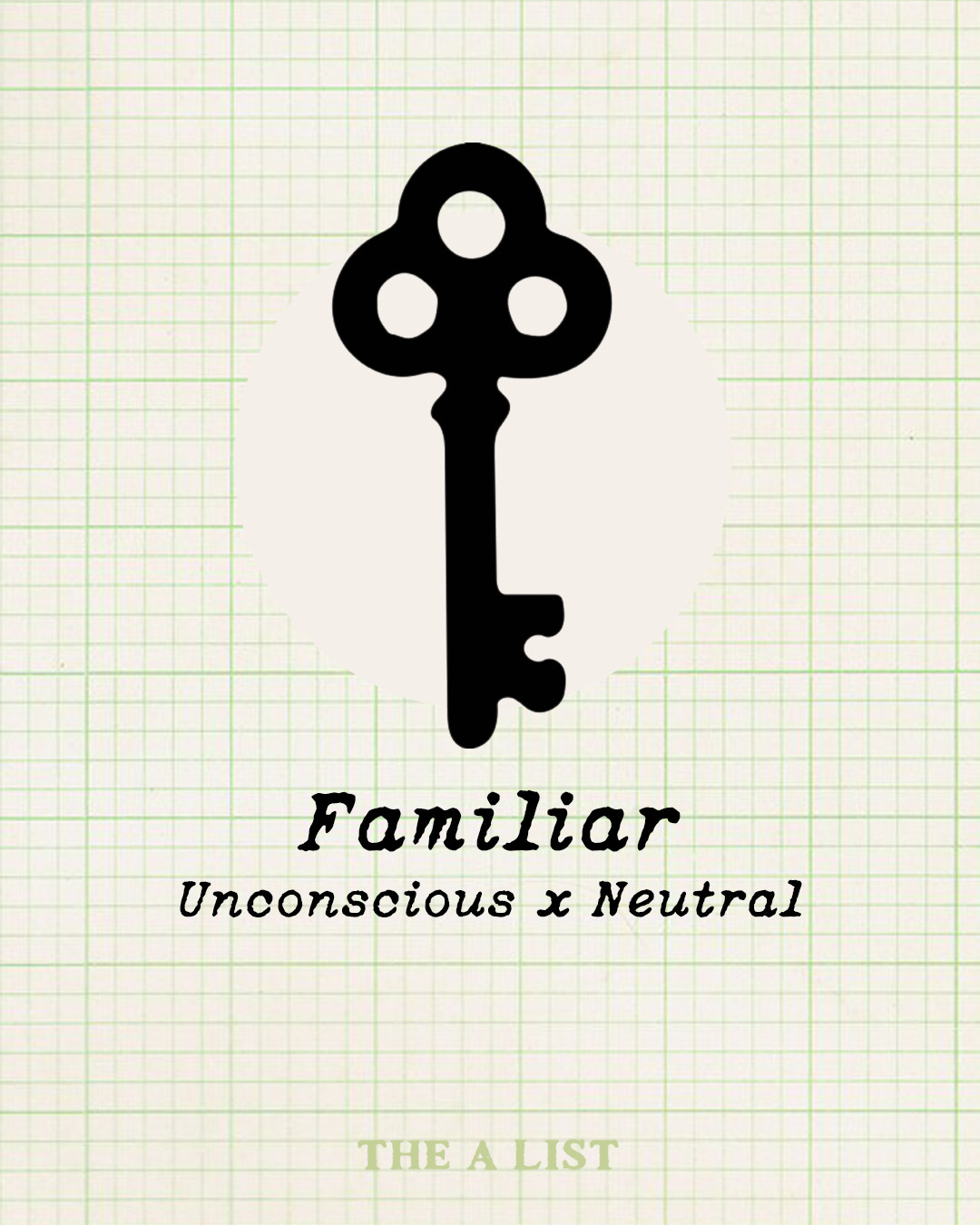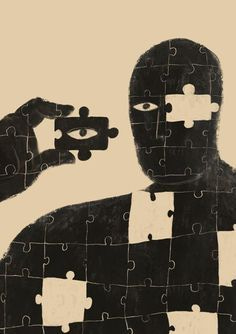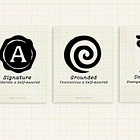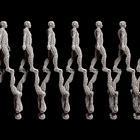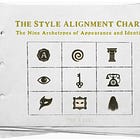Inside the Alignment Chart: The Neutral Row
Style, when the self is unresolved.
The Signature Self is a study of personal style as behavioral evidence. It explores how we present ourselves, and how those presentations reveal the alignment of our inner and outer lives.

You don’t always know what you want to look like.
Some days you try something new and it feels close, but not quite. Other days you slip back into the clothes you’ve always worn.
Your style doesn’t feel broken. It just feels unresolved. There’s no collapse of self here, no hollow indifference. But there is hesitation, an echo of unfinished thought, the sense that your wardrobe doesn’t really reflect who you are, entirely.
This is the Neutral Row of the Alignment Chart: a space of suspension.
These archetypes, The Seeker, The Familiar, and The Muted, hold a distinct relationship to style. One experimental, one repetitive, one evasive. What unites these three is not exacting or presence, but ambiguity: they circle identity without fully resolving it. Their choices carry hints of clarity, but also hesitation; at their core, they are not totally sure what they want their clothes to say.
The Style Alignment Chart: A Conceptual Map
The Style Alignment Chart is a two-axis framework:
Vertical axis: Psychological grounding (from Self-Assured to Withdrawn)
Horizontal axis: Relationship to style (from Deliberate to Disengaged)
Each archetype is positioned where these two forces intersect: intention and identity, presentation and perception.
Today, we will discuss the middle: the Neutral Row.
What Neutral Means in This System
Neutral is not weakness. It is suspension.
In psychological terms, it reflects:
Identity diffusion (Erikson, 1968): when self-concept is present, but unresolved, caught between past identifications and emerging possibilities.
Role experimentation (Marcia, 1966): the stage where trial and error becomes the method for self-definition.
Low integration, moderate stability: the inner and outer self are not fractured, but they are not seamlessly aligned. Some choices feel authentic; others feel temporary, borrowed.
Each archetype in this row—The Seeker, The Familiar, and The Muted—illustrates a different mode of unresolved identity. One searches. One repeats. One detaches. What unites them is not what they wear, but the sense that style has not yet become a settled extension of self..
How They Move Horizontally
Across the row, we see a shift in conscious intention:
The Seeker dresses with intention, but never with finality. Each outfit is a test of identity, rather than a conclusion. Think: the person who never looks the same two days in a row, swinging from one end of the spectrum to the next.
The Familiar defaults to stability. Their style is consistent and comforting, but largely unexamined. Think: the person who buys the same shirt in five colors, wearing all of them the same exact way.
The Muted disengages. Their choices happen passively with a sort of indifference that keeps them from being fully seen. Think: the person whose outfit feels automatic, not intentional.
This is where we see the Feedback Loop of Identity in action: experiments invite reactions, reactions reward repetition, repetition slips into default, reinforcing neutrality or nudging you toward assurance or withdrawal.
✦ The Seeker
“I dress to discover.”
Distinguishing Traits:
Active experimentation: style becomes a testing ground for identity, it’t not fixed. This person would have a very hard time picking one outfit they thought best represented them.
Symbolic referencing: clothing often signals belief systems, subcultures, or narratives, each event or trend-wave would produce a new aesthetic, wildly ranging due to atmosphere, popularity, and their relationships, friend groups.
Constant mutability: visual shifts are common and deliberate, but rarely stable
✦ The Familiar
“I dress to remain.”
Distinguishing Traits:
Habit-driven style: their wardrobe repeats a known rotation with little deviation, changing their usuals makes them very umcomfrotable, they dont feel like ‘themselves’.
Stability over novelty: clothes are chosen for comfort and recognition (as in: I have worn this before, so I will wear this again, not recognition as in attention-drawing), not expression
No urgent self-questioning: their identity feels “good enough.”
✦ The Muted
“I dress by default.”
Distinguishing Traits:
Absence of insistence: clothing feels incidental, chosen beccause it’s available and easy to wear
Quiet ambivalence: they care in theory, but lack the energy or conviction to translate it outward. They are not lazy, but are somewhat distant from themselves.
Low visual authorship: their presence is softened by detachment, not by rejection or collapse. They are not cowering, they are withdrawn.
In Closing
Those who occupy this row do not reject style, nor do they master it (yet!). They live in the inbetween, where clothing is trial, habit, or afterthought. The Neutral Row is the space of suspension: a holding pattern between the clarity of self-assurance and the distance of withdrawal.
Next time,
We’ll be discussing the final row, which houses The Withdrawn: The Masked, The Veiled, and The Ghost. A row where appearance no longer stabilizes, but conceals. I promise, it’s not as sour as it sounds!
With all that, go out, be brave, be bold, and don't be afraid of being ugly or silly or strange!
The world needs to to experiment and play, to try new things and find new pieces you love. Never forget that personal style is experimentation, a method of finding out more of who we are. You have the magnificent, unique ability to express your inner world in a way that no one else ever could.
Your style is not a performance.
It is a self-fulfilling prophecy.
With great personal aesthetic,
Alexandra Diana, The A List
The Alignment Appendix
Bibliography:
Deci, E. L., & Ryan, R. M. (1985). Self-Determination Theory and the Facilitation of Intrinsic Motivation, Social Development, and Well-Being.
McAdams, D. P. (1993). The Stories We Live By: Personal Myths and the Making of the Self.
Goffman, E. (1959). The Presentation of Self in Everyday Life.
Adam Galinsky et al. (2012). Enclothed Cognition. Journal of Experimental Social Psychology.


